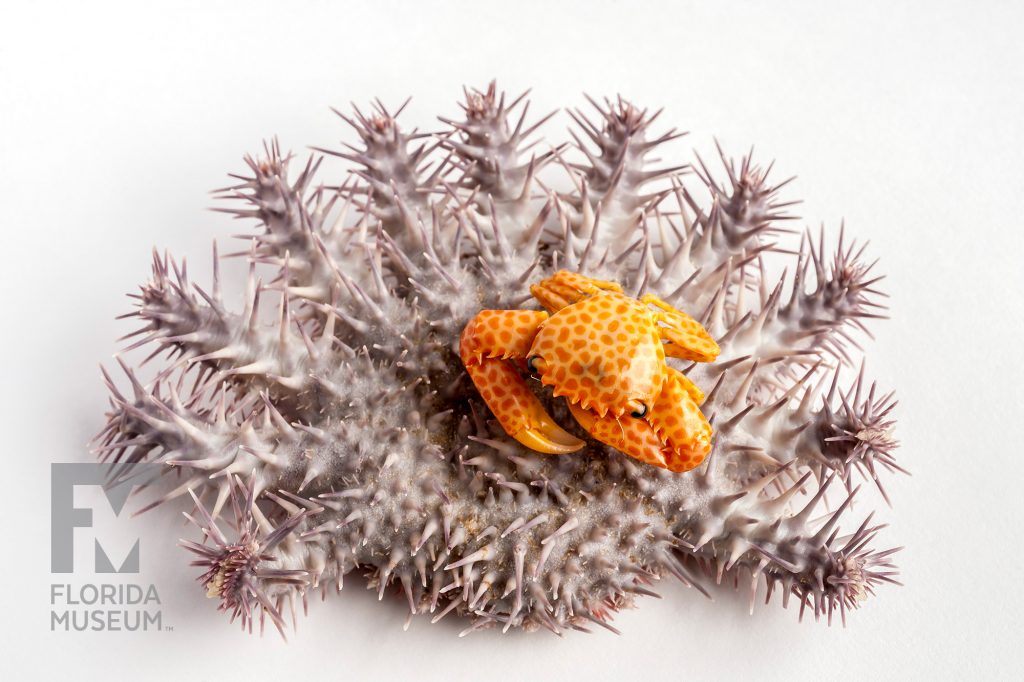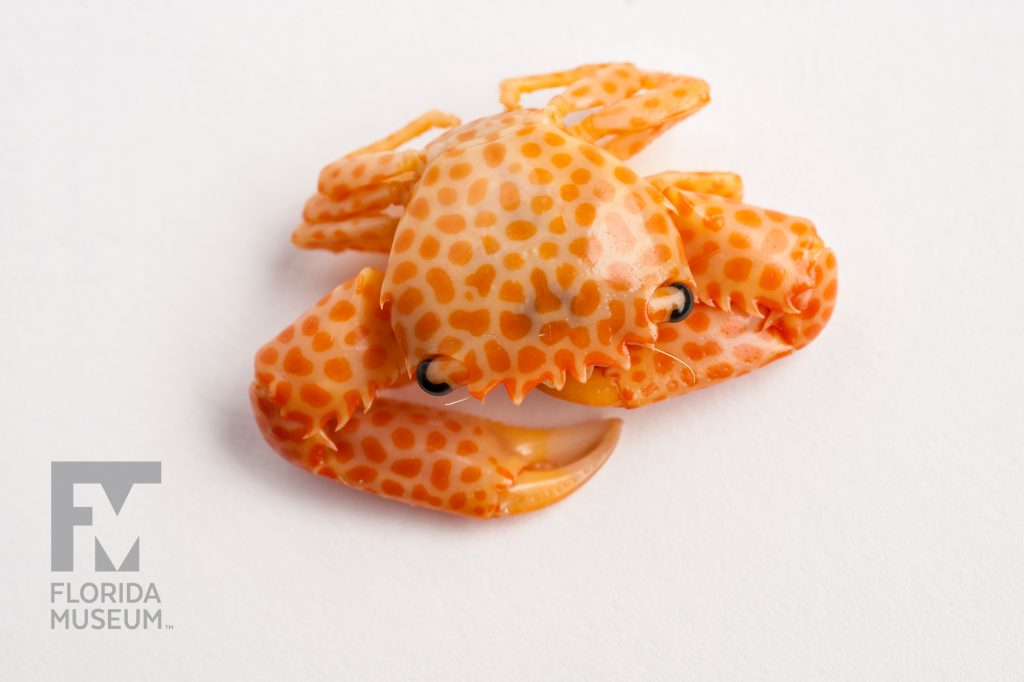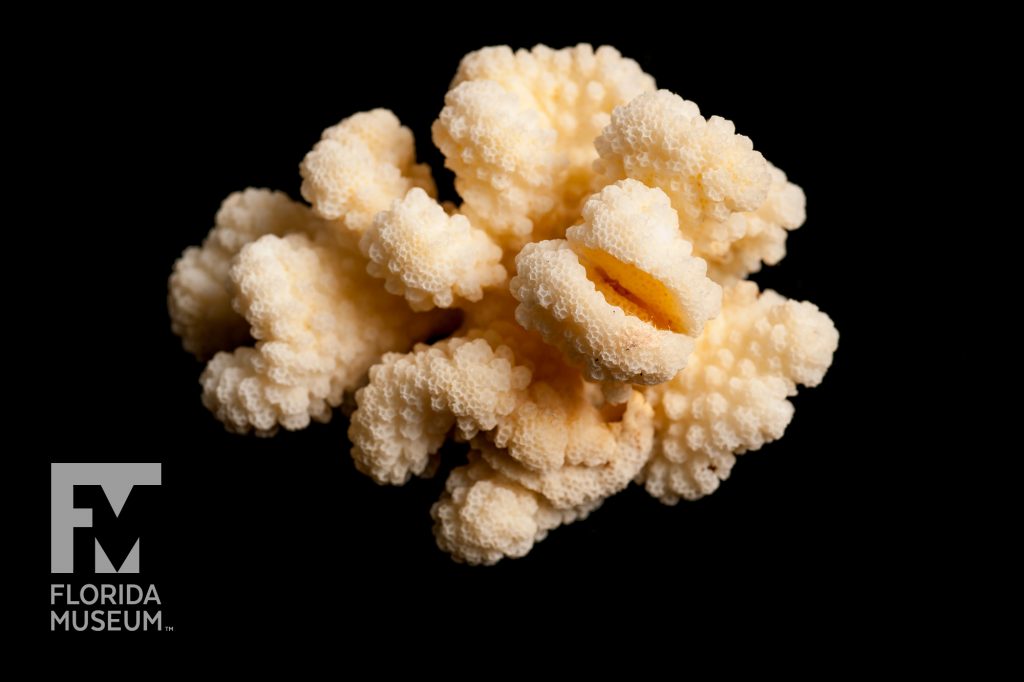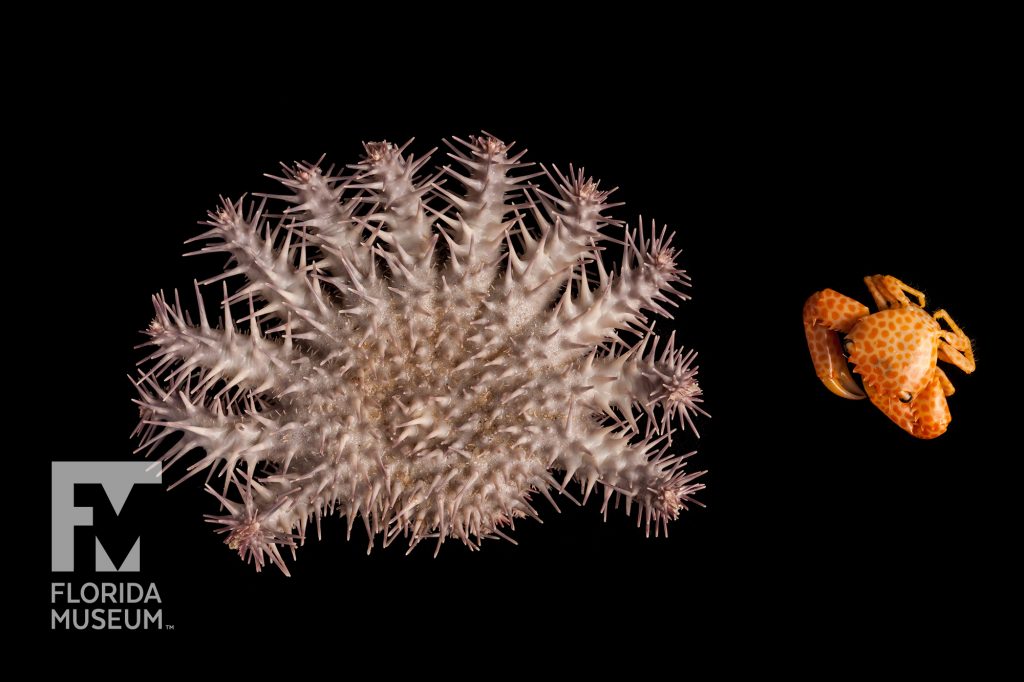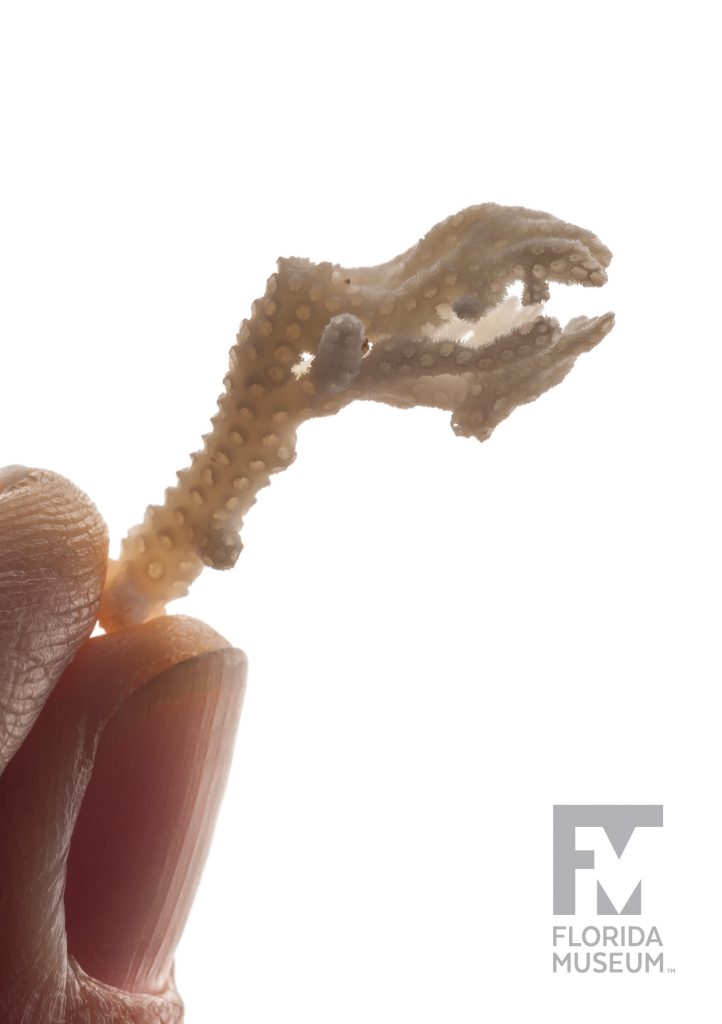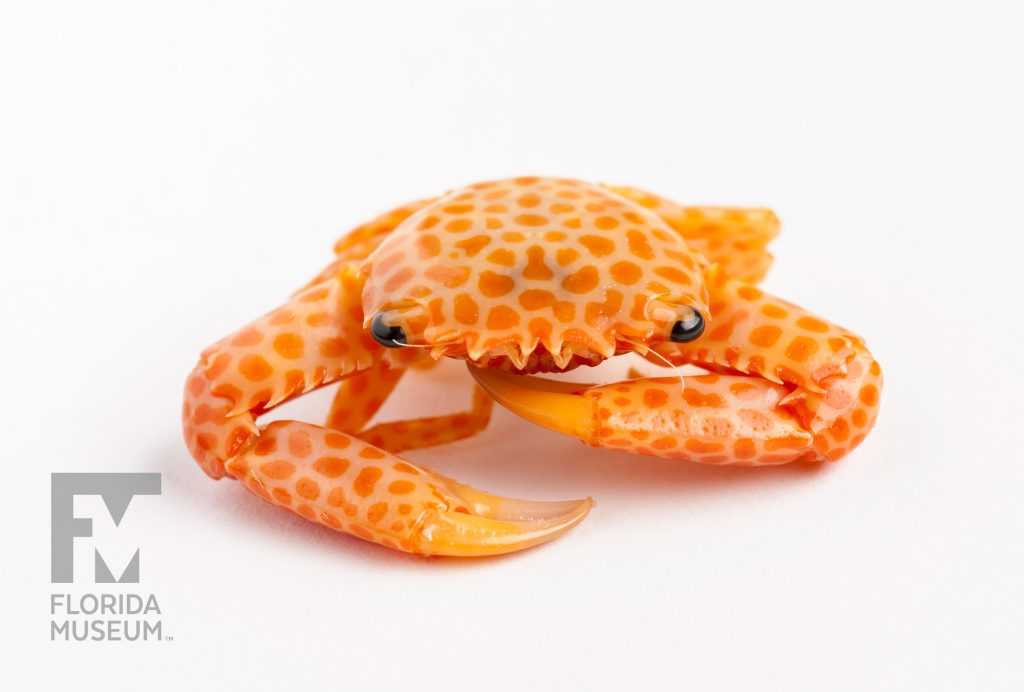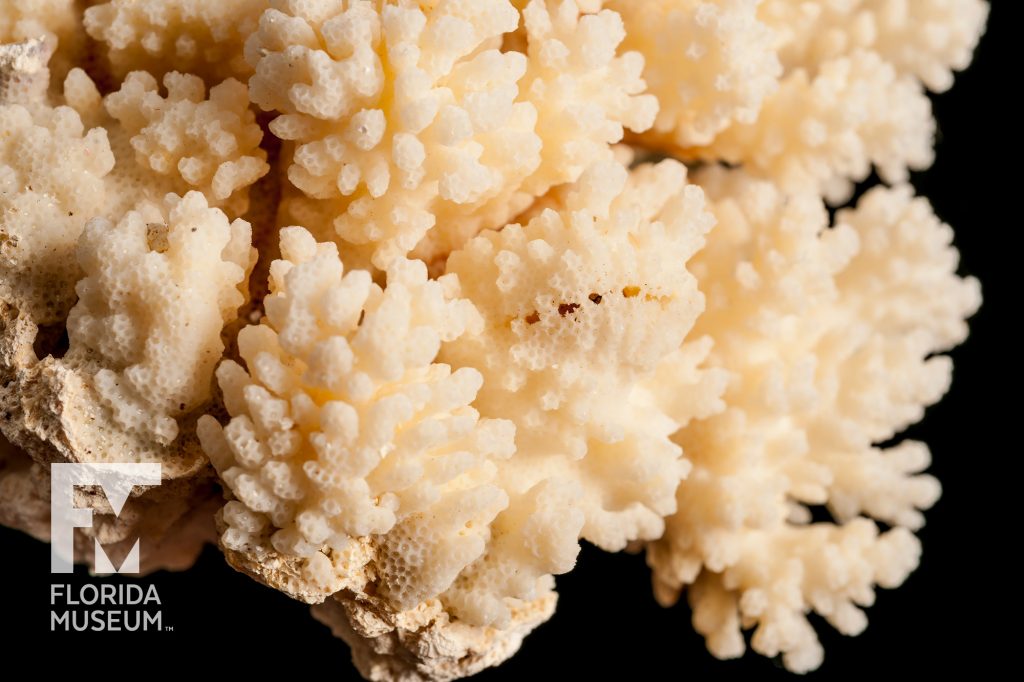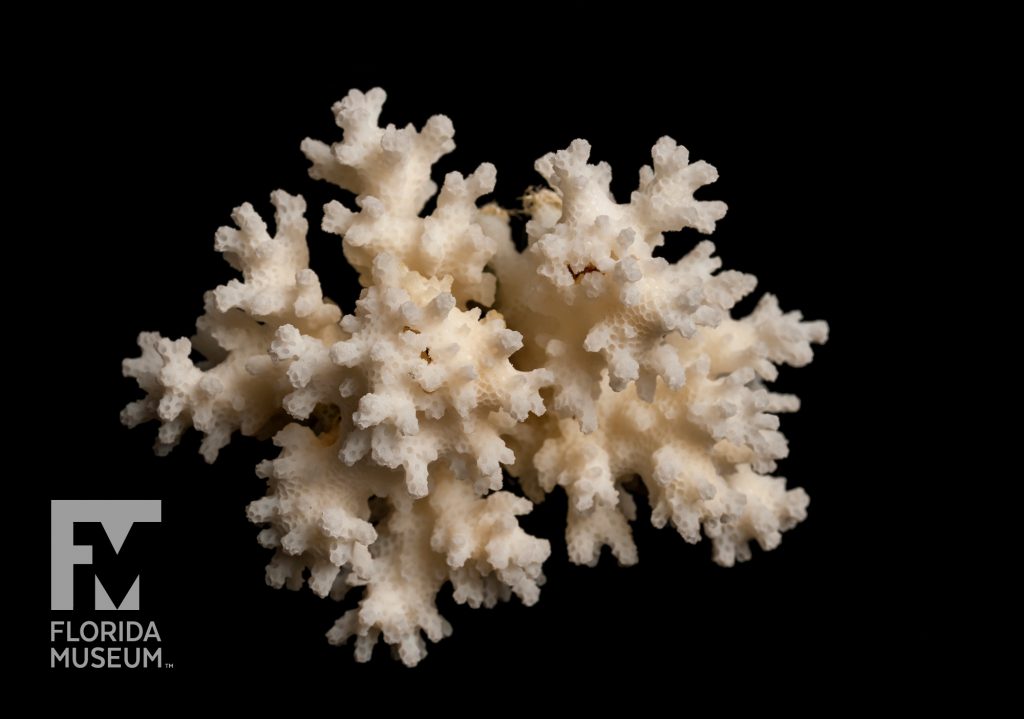Pocillopora Corals are spectacular, branching animals that dominate Pacific reefs. Specialized Guard Crabs live within the coral’s branches, protecting it from predators such as the Crown of Thorns sea star. These three species demonstrate the complex biodiversity of coral reefs.
Summary
Pocillopora Coral (Pocillopora verrucosa)
Guard Crab (Trapezia rufopunctata)
Crown of Thorns (Acanthaster planci)
From the Western and Southern Pacific, 2005-2012
Collection
Story
Reefs are dynamic places with a lot of big action and scary stuff happening; outbreaks of Crown of Thorns being a great example of that. These sea stars that can grow over a foot or a foot and a half in diameter, full of spines — you put your hand on them and you get really hurt — devour coral. They can put their stomachs out of their body and digest the coral outside their body and slurp it up. And these animals can eat up entire reefs. When a front of Crown of Thorns goes through a reef, 95-99 percent of the coral can die.
A few coral species have defenses, but not in and of themselves, but by their symbionts, and a good example of this is the Pocillopora coral shown here. These corals are home to little crabs called guard crabs that live among the branches, and the coral likes them so much that it makes little fat fruits for them that the crabs harvest and eat. Now the crabs, in turn, deter predators that want to eat the coral. So when a Crown of Thorns crawls up to a Pocillopora coral, the guard crabs will congregate on the end of the coral where the sea star is coming from and start nipping at it and drive it away. As a result, Pocillopora can survive an attack unlike most other corals.
Gustav Paulay
Curator, Invertebrate Zoology
Florida Museum of Natural History
Exhibit
On display Sept. 23, 2017-Jan. 7, 2018, Rare, Beautiful & Fascinating: 100 Years @FloridaMuseum celebrated the Museum’s rich history. Each Museum collection was asked to contribute its most interesting items and share the stories that make them special. Though the physical exhibit is closed, this companion website remains online, providing an opportunity to experience the Florida Museum’s most treasured specimens.
Exhibit Area: Objects Tell Stories
Theme: Biodiversity Hot Spots (Reefs)
 Want to see more? Explore more than 300 breathtaking color photos of plants, animals, fossils and cultural heritage materials from the Florida Museum of Natural History’s collections in the award-winning book All Things Beautiful available from the University Press of Florida.
Want to see more? Explore more than 300 breathtaking color photos of plants, animals, fossils and cultural heritage materials from the Florida Museum of Natural History’s collections in the award-winning book All Things Beautiful available from the University Press of Florida.
*This title was accurate at the time the exhibit was on display in 2017. Please visit the collection website to verify current staff and student information.
